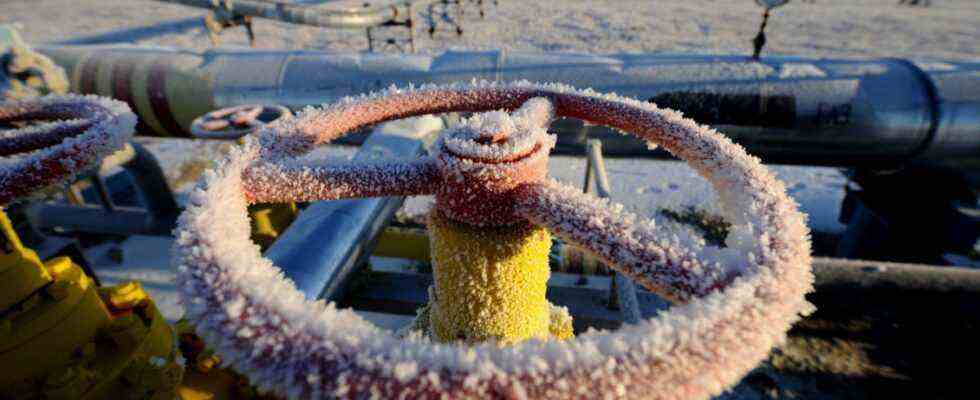Germany’s vulnerability will be decided in the next few weeks by the weather report. If the winter stays mild, things could turn out lightly. If, on the other hand, there is another cold period, it gets really tight. Then the conflict between Russia and Ukraine could also end up in our living rooms.
A first indication is the filling level of the German gas storage facilities. In the last five years, this averaged 75 percent at the beginning of the year. This year, according to the storage initiative INES, the figure is barely 50 percent. And the mild days around the turn of the year also helped. If things continue at the current pace, there will only be around 37 percent left at the beginning of February, a threatening figure. A few years ago, a report by the Federal Ministry of Economics and Technology once estimated a storage capacity of 40 percent to cover a seven-day cold spell – as of February 1st. And such a cold phase that can happen in February. “We have never experienced such lows in the past,” says INES Managing Director Sebastian Bleschke. And advises: “We should be careful with the scarce reserves.”
Such is the situation at the beginning of a conflict that could interrupt Germany’s gas supply from the east. Around 40 percent of the gas in Germany comes from Russia. It is not possible to say exactly because molecules do not have a designation of origin. And much of the natural gas that lands in Germany ultimately flows on to other European countries – which in turn only means that if the Russian troop deployment becomes serious, it is not Germany alone that has a problem.
The price increase has several causes
The German economy has been feeling what this means for months due to rising natural gas prices. The Federal Office of Economics and Export Control recorded a 60 percent increase in import prices from September to October alone. Compared to the month of the previous year – which was also shaped by the corona crisis – the increase was an incredible 216 percent. More recent figures are not yet available. With the next gas bill, the problem will reach millions of consumers. And the electricity prices are also rising with the expensive natural gas.
The rise in prices originally had more than one cause. The sharp slump in the global economy initially had a massive impact on the demand for gas, which caused prices to fall. But the rapid recovery in Asia also led to a rapid rise in prices, flanked by special effects such as a drought in South America – hydropower became scarce, gas-fired power plants stepped in. And in time for winter, the Europeans wanted to replenish their supplies. So fate took its course.
In the meantime, however, the EU Commission also suspects that the Russian gas monopoly Gazprom is involved. It gives food for thought that a company is reducing its supply despite growing demand, said EU Competition Commissioner Margrethe Vestager in Brussels on Thursday. “This is very rare behavior in the market.” The issue of energy prices has high priority.
The conflict with Ukraine also threatens the flow of gas from Russia
But what if the conflict in eastern Ukraine escalates? This would threaten the flow of gas from Russia in two ways. For one thing, the West has threatened sanctions. In the case of the Nord Stream 2 pipeline, which has just been completed, that would be tolerable – although it has been filled with gas since Christmas, it has not yet delivered a cubic meter. It would be different with the sister tube Nord Stream 1. It currently supplies 1.6 billion kilowatt hours of natural gas per day, which is about the usual level. Sanctions that don’t make an exception for energy supplies again could end this influx. Added to this is the pipeline system through Ukraine. The gas network operator there, Naftogaz, is already assuming that its pipelines would be targeted in the event of a war. In the worst-case scenario, Germany and Europe would be left without gas from the East.
There are answers. Gas can be procured on the international market with special tenders, just on Friday the Trading Hub Europe started one. He is responsible for the German gas market area. A spokeswoman says the aim is to secure gas volumes for February and the first half of March given the low storage levels. Finally, there are also a number of other suppliers: Norway, for example, the second largest supplier, can also deliver via pipelines. And then there is the liquefied gas market, which has been dominated by Qatar and Australia so far, but where the USA is preparing to become the new number one. “Building up a small gas reserve for the end of winter in a tense market situation in the middle of winter is of course not the best winter precaution,” says Ines boss Bleschke.
So it might not necessarily be a shaky winter. But certainly a very expensive one. And especially if Russia fails.

